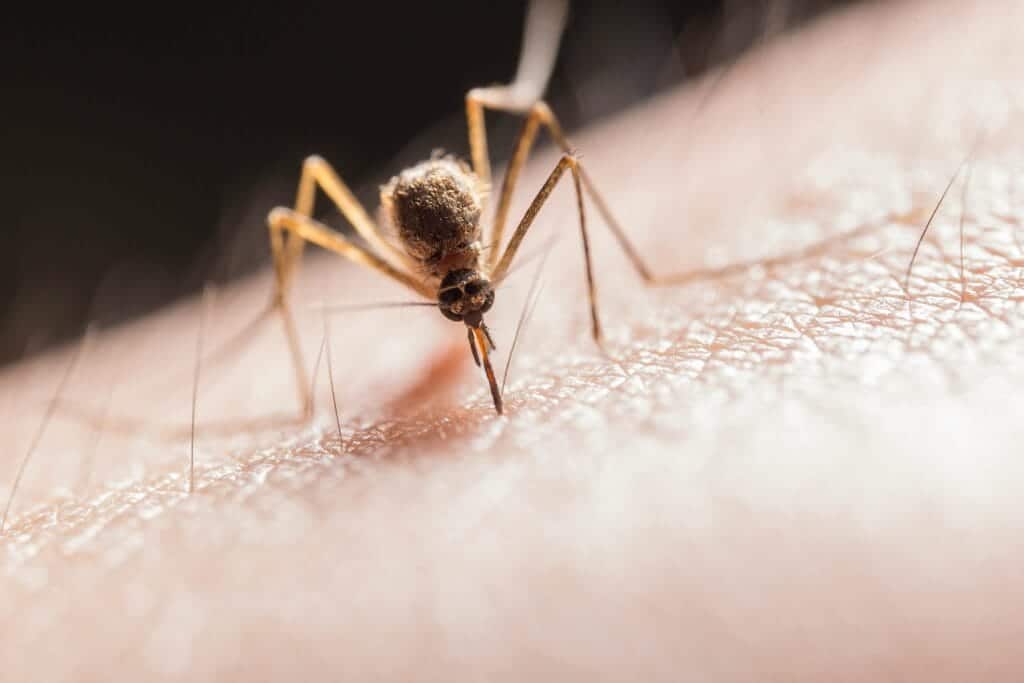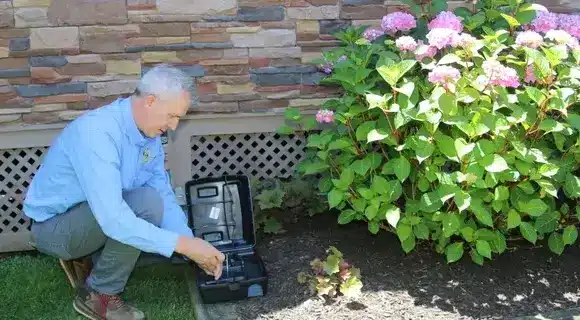


Mosquitoes go through a four-stage life cycle: egg, larva, pupa, and adult. They lay their eggs in standing water, and larvae develop into pupae before emerging as adults. Only female mosquitoes bite, as they require blood to produce eggs. Males and females both feed on plant nectar for energy. Mosquito populations thrive in warm, humid environments, particularly during the spring and summer months.
Mosquito control focuses on targeting resting sites and breeding grounds. Our technicians use a backpack sprayer to apply an insecticide treatment to shaded areas, thick brush, ivy patches, and other common mosquito harborage sites. Our treatments include:
For best results, regular treatments are recommended throughout the mosquito season, typically from April through October.
Mosquitoes are attracted to standing water, shaded areas, and carbon dioxide emitted from breathing. Birdbaths, clogged gutters, and unused containers holding water create prime breeding grounds.
Our treatments remain effective for approximately 3-4 weeks, depending on weather conditions. Regular applications are necessary to maintain control.
The In2Care system is an eco-friendly approach that targets mosquito breeding, making it a great alternative for those who prefer not to spray. However, it works best when used in conjunction with traditional treatments.
You’ll see a noticeable reduction in mosquito activity within 24-48 hours. Continued treatments will keep the population under control throughout the season.
No, mosquito treatments are only necessary from spring through fall when they are active. Mosquitoes become inactive and die off in colder temperatures.
Yes! Eliminating standing water, using fans, planting mosquito-repellent plants like citronella, and keeping vegetation trimmed can help reduce mosquito activity. However, professional treatments provide the most effective and long-lasting results.


